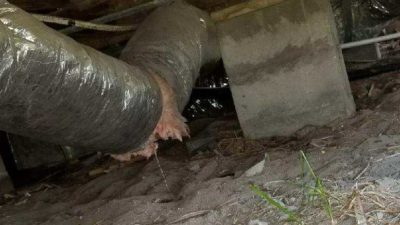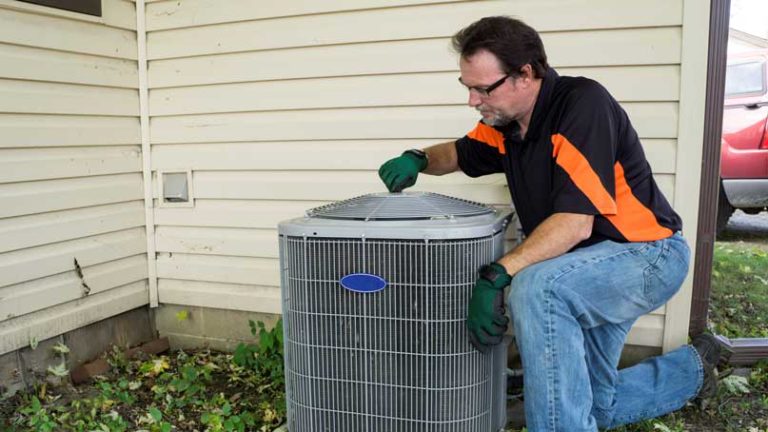Some of the links in this post are affiliate links. We may receive compensation if you click one of those links and purchase a product.
Since I left my corporate life at the end of 2016, my primary job has been to tend after our real estate, which sometimes requires trips to the locations where we have properties. Last week I took a trip to Jacksonville, where we own 5 rental units across 4 properties.
Trip Planned To View Newly Vacated Property
The original purpose of the trip was to do a walk through of one of the units in the duplex we purchased about a year ago, which was to become vacant at the end of its current lease. But sometimes things don’t work out as planned.
A few weeks after I purchased the plane ticket to Jacksonville, we found out that the outgoing tenant needed more time in the unit because the place they are moving into is not quite ready. Not wanting the bad karma over our heads from saying no to this request, of course we allowed the tenant to stay past the lease until their new place was ready.
We are looking forward to this vacancy because the unit was occupied when we purchased it, and we are hoping the vacancy will allow us to raise the rent up to market rate. Also, it will be an opportunity to do a good walk-through, determine if any improvements need to be made and get some good photos.
Instead, Air Conditioners On The Fritz
While the original intent of my trip to Jacksonville was no longer necessary, it turned out a trip was warranted for a different reason.
In the span of a couple of weeks, we found that the air conditioning in the downstairs unit was not working well, that the air conditioning in the upstairs unit was also not working well, and finally that the duct work below the house for the downstairs unit was a mess and needed to be replaced!
Just like that, out of nowhere, we were looking at approximately $10,000 in needed repairs!
When that kind of money is being spent on repairs, I personally feel like it is a good idea to take a trip to see the issue firsthand and talk to the property manager and the people doing the work. It is a small price to pay to ensure that everyone is on the same page, especially given that the costs a trip for real estate business purposes are tax-deductible.
Here is how it all went down:
April 24 – The Air Conditioning Troubles Begin
I got the initial call from my property manager that the air conditioning in the downstairs unit was not cooling well, and with the weather really heating up in Jacksonville, it was becoming a problem. I was told that a repair of cleaning the coils should do the trick for a few hundred dollars, and so I authorized the work.
April 27 – Time To Replace Downstairs Air Conditioning System
I got an email from the property manager, explaining that there was a miscommunication, and that due to the age of the equipment (approximately 17 years old), the air conditioning system should be replaced.
Further complicating matters is that the air handler (typically located inside) was actually under the house, and so the job would include relocating the air handler inside, which should help preserve the new system for a longer life.
Air conditioning systems are expensive to replace, and the cost to replace this one would be $4,400. Ouch!
May 9 – The Downstairs Ducts Are Bad Too
 When the technicians were replacing the air conditioning system in early May, and they got themselves well under the house to replace the equipment, they found that the ducts (located under the house for the downstairs unit) were in really bad shape, with tears, missing insulation, and other problems in multiple spots.
When the technicians were replacing the air conditioning system in early May, and they got themselves well under the house to replace the equipment, they found that the ducts (located under the house for the downstairs unit) were in really bad shape, with tears, missing insulation, and other problems in multiple spots.
This was not a surprise to us because it had been identified as potential trouble when we inspected the property before we purchased it. However, the timing was unfortunate coming on the heels of the already expensive replacement of the system, and the additional news I received that day that the upstairs air conditioning system was also not working properly.
Given that they would be replacing everything (including the return ducts) and doing extra work to make sure the ducts would be strapped properly to the underside of the house, the cost to replace the ducts was estimated at $2,500.
May 14 – Air Conditioning System Upstairs Is Also Not Working
My property manager had already foreshadowed for me that the air conditioning in the upstairs unit was not working well, but on this day I received two estimates from them, one to repair and one to replace.
It seems that a non-standard refrigerant had been used in the unit, and it was leaking in a way that could not be repaired. The proper fix for something like this is to replace the coils completely and use new refrigerant. So, we got quotes for both replacing the coils ($1,500+) and replacing the full unit ($4,400).
Again, given the age of the unit (approximately 17 years) we decided to replace the unit.
For those of you keeping track at home, that’s $4,400 for the upstairs AC, $4,400 for the downstairs AC and $2,500 to replace the downstairs ducts, for a total of $10,900. Triple Ouch!
May Ongoing – Fixing The Ducts Under The House
Given the apparent high cost ($2,500) of replacing the ducts under the house, I asked my property manager to get a competing quote to make sure we were in the right ballpark.
Personally, I would lean towards using the company that replaced the main system since they would already be familiar with the house and the system, but if their price was too high, I’d be happy to go with another company.
In typical fashion, a 2nd company kept promising that a quote was coming, but it never did. Also, in typical fashion, the property management company didn’t really help with other recommendations, so I had to take it upon myself to talk to my realtor to get other names and have the property manager reach out to those companies for a quote.
At the current time, I’m still waiting for a competing quote, so that I can authorize one of the companies to come in and do the work. The ducts are for the downstairs unit, which will soon be going vacant anyway, so given that the newly installed system is doing a much better job of cooling the unit, the worst case scenario is that the ducts will get replaced when the unit is empty.
Old Mechanical Systems Will Fail Sooner Than Later
Replacement of the units was the right move in this case, given the age, but it hurts to eat all of that cost at one time.
Our property inspection had surfaced these potential issues, among others, and so we were aware that these mechanical systems were old, and that capital improvement would eventually be needed to replace them. But we were not expecting to have to replace them all within one year of the purchase.
When purchasing a property with old mechanical systems, such as air conditioning in Florida, you need to make sure that either the purchase price reflects a discount due to the eventual need to replace them, or you should negotiate a reduction in price during the contracted due diligence period.
In our case, we thought our purchase price was below market value and there was some room to make these improvements, but given the extent of the mechanical issues found (two 15+ year old AC systems) and other problems identified in the inspection, we were able to negotiate a $10,000 reduction in the contracted price. This certainly softened the blow since these repairs will cost just over $10,000.
When To Replace Your Air Conditioners – The $5,000 Rule

In our case, it was pretty clear that replacement was warranted given the age of the units and the estimated cost to repair vs replace. But it is not always clear, and sometimes it is hard to decide whether to do a repair of a few hundred dollars vs replacement which will run several thousand.
In my internet research, I saw several mentions of the ‘$5,000 Rule,” which was new to me. Essentially the $5,000 Rule means that if the estimated repair cost times the age of the equipment in years is more than $5,000, then it makes sense to replace not repair. Given the approximate 17 year age of our systems, any repair over $300 would call for replacement of the system, and to me that feels about right.
While normally my cynical self would attribute this ‘rule’ to a small few AC companies that are trying to be cute in coming up with arguments to do a full replacement, searching for more information led to many Google pages of companies and sites that talk about it. I guess it is a legitimate thing!
The Bigger Your Rental Portfolio The Easier It Is To Weather The Storm
When you are a small business real estate investor, if you are not diligent in putting aside funds for capital improvements for the rainy day when they are needed, such as an air conditioning or roof replacement, or whole house painting, it can really sting to get bills in succession that total $10,000.
For our personal portfolio, we don’t keep aside funds specifically for repair. Instead, given the size of our portfolio, we rely on the ongoing income to weather the storms that come up. When necessary, we can also utilize our home equity line of credit.

While our current rental portfolio is 15 units, 12 of them are in our personal portfolio and 3 are in our retirement portfolio. Since our retirement funds cannot be used until we reach retirement age, or we otherwise decide to draw funds early, we cannot co-mingle our retirement funds to pay for repairs to our personal properties, even though we have a bigger cash reserve in our retirement Solo 401(k) account.
(If you are interested in purchasing real estate with your retirement funds, you may be able to use a self directed IRA or solo 401(k). Check out Checkbook IRA)
$10,000 is a lot of money to come up with at once, but while it is pouring rain now, there are also definitely dry patches where things go well. We recently had a string of months where all of our tenants paid rent, we had no vacancies or delinquencies, and little in the way of repairs, and so we are in a better position to absorb this hit.
======
Last year our real estate ‘storm’ was in Indianapolis, where we had a several large expenses primarily due to a split level house with a leaky downstairs, and an eviction that led to several months of lost rent, and two properties with costly turnovers, but that’s a blog post for another day. Thankfully things in Indy have been pretty stable for us this year.


 We are Scott and Caroline, 50-somethings who spent the first 20+ years of our adult lives in New York City, working traditional careers and raising 2 kids. We left full-time work in our mid-40’s for location-independent, part-time consulting projects and real estate investing, in order to create a more flexible and travel-centric lifestyle.
We are Scott and Caroline, 50-somethings who spent the first 20+ years of our adult lives in New York City, working traditional careers and raising 2 kids. We left full-time work in our mid-40’s for location-independent, part-time consulting projects and real estate investing, in order to create a more flexible and travel-centric lifestyle.  Financial independence and early retirement is not something we originally focused on, but over time realized it was possible. Our free report,
Financial independence and early retirement is not something we originally focused on, but over time realized it was possible. Our free report, 






